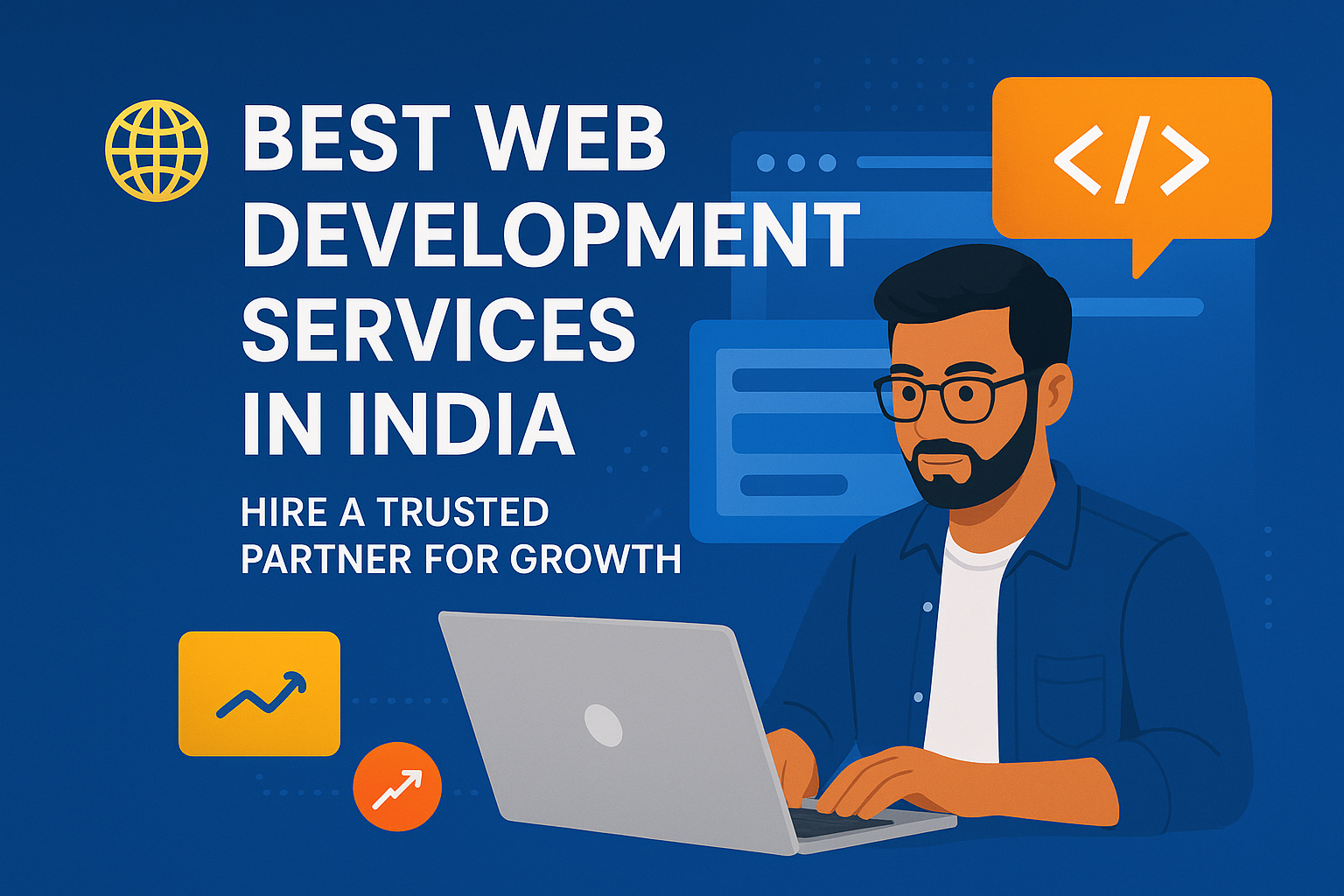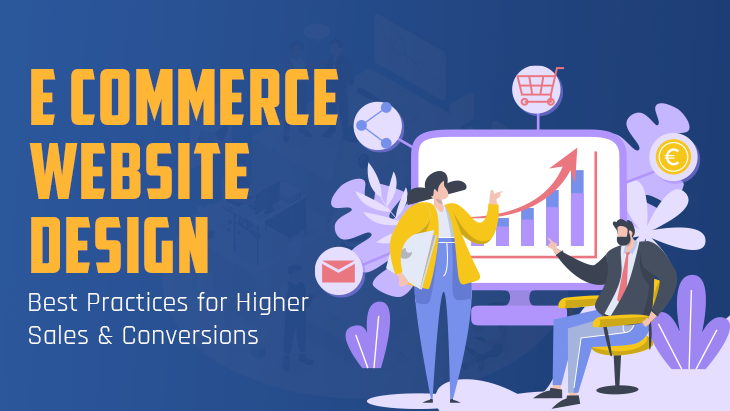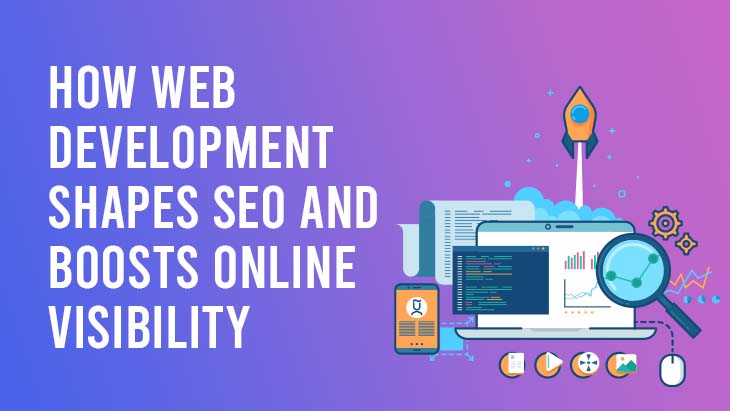Your website isn’t just a brochure—it’s your storefront, sales engine, and customer support desk rolled into one. Whether you’re B2B, D2C, or a services brand, a fast, trustworthy, and easy‑to‑use site directly impacts revenue. That’s why choosing the right web development partner isn’t a nice‑to‑have; it’s a business decision with real upside (or downside).
In 2025, the right partner will help you ship a site that loads quickly on mobile, ranks for high‑intent searches, converts visitors, and scales with your goals. The wrong choice leads to slow pages, technical debt, and avoidable re‑builds. Let’s make sure you pick well.
Why India Leads the World in Web Development Services
Hiring a web development company in India gives you access to world‑class talent without enterprise‑level costs.
- Deep, diverse skill sets: From PHP/Laravel and WordPress to React/Next.js, Vue/Nuxt, Node.js, .NET, Java/Spring, and Shopify—India’s developer ecosystem covers the full spectrum. Need custom web development services or a headless CMS? You’ll find specialists.
- Cost‑effective without cutting corners: Mature teams deliver quality engineering at competitive rates, letting you invest more in growth (content, CRO, paid media) instead of burning the budget on basic build costs.
- Time‑zone advantage: With partial overlap to EMEA and the US, you can run round‑the‑clock progress—daytime development in India, feedback cycles in your local morning.
- English‑first delivery: Most top web development agencies in India work seamlessly with global teams using familiar tools (Figma, Jira, GitHub/GitLab, Slack).
If you’re comparing an offshore web development company to local options, focus on outcomes: Core Web Vitals, SEO readiness, accessibility, security, and speed of iteration—not just hourly rates.
The Strategic Role of a Web Development Partner in Business Growth
Think beyond “we’ll build pages.” A true partner helps you connect the dots between business goals and execution.
Freelancer vs Agency vs Full-Service Company: Choosing the Right Fit in India
- Freelancer: great for small, well‑scoped tasks; limited bandwidth and coverage.
- Boutique agency: good balance of cost and capability; check depth in DevOps, QA, and UX.
- Full‑service development company: strategy, UX/UI, front‑end, back‑end, QA, DevOps, SEO, and ongoing care in one place.
Strategic Alignment: Connecting Business Goals with Web Development Execution
- The best teams start with your goals, ICP, and funnel. They recommend the right stack (monolith vs headless), define performance budgets, and plan content and SEO structure before writing code.
UX and Scalability: Designing for Growth and Long-Term Success
-
A clean, accessible design system with design tokens, component libraries, and TypeScript keeps design consistent and code maintainable as you grow.
Key Qualities to Look for in a Web Development Company in India
Use this as your shortlist checklist when you hire a web developer in India.
Proven portfolio and industry experience
-
Look for similar business models (B2B SaaS, D2C ecommerce, marketplaces) and measurable outcomes: faster pages, higher conversions, organic growth.
Transparent communication and agile workflow
-
Weekly demos, written updates, clear risks, and next steps. You should know what shipped, what’s blocked, and what’s next—without chasing.
Technical breadth and depth
-
Front‑end (React/Next, Vue/Nuxt, SvelteKit), back‑end (Node/Nest, .NET, Java/Spring, PHP/Laravel, Python/Django), CMS/ecommerce (WordPress/Shopify/Adobe Commerce, or headless CMS like Sanity/Strapi/Contentful). Comfort with CI/CD and cloud/edge hosting (Vercel, Netlify, Cloudflare, AWS).
UI/UX design that drives engagement
-
Information architecture, clear typography, reduced motion, accessibility (WCAG 2.2 AA), and conversion‑minded layouts. Website design and development services should be joined at the hip.
According to Google, improving mobile load time by 1 second can increase conversions by up to 27%.
Performance, SEO, and schema as first‑class citizens
Core Web Vitals targets (LCP ≤ 2.5s, CLS ≤ 0.1, INP ≤ 200ms), technical SEO (sitemaps, canonicals, hreflang), and structured data (Article/FAQ/Product/Breadcrumb/Organization).
Security and privacy discipline
OWASP Top 10 hygiene, SBOMs/dependency scans, passkeys (WebAuthn), CSP/SRI for third‑party scripts, consent mode with server‑side tagging, and DPDP Act awareness for Indian users.
Post‑launch support and maintenance
-
Clear SLAs, patch and dependency updates, performance monitoring, and a CRO/SEO improvement cadence.
Common Mistakes to Avoid When Hiring a Web Development Company
Avoid these traps and you’ll save months of rework.
- Choosing purely on price: The lowest bid often skips QA, accessibility, and performance budgets. You’ll pay later in lost conversions and rebuilds.
- Ignoring long‑term support and scalability: Ask how updates ship, who owns the code, and how easy it is to expand features. Shortcuts here become technical debt.
- Overlooking cultural and communication fit: You want proactive people who flag risks and propose solutions—not order‑takers. Ask for a sample weekly report.
- Not reviewing case studies or references: Request outcomes, not just screenshots: “What was LCP before/after?” “How did conversion rate change?” “What did we learn?”
How the right partner drives real ROI
A strong website pays for itself. Here’s what that looks like in practice.
- Faster pages → more sales: Cutting 1–2 seconds from mobile LCP can lift conversions 10–30%. A partner who fixes image discipline, preloads fonts, and trims JavaScript will move your numbers, not just your look.
- SEO that compounds: A clean architecture, helpful content, and internal linking build durable rankings. Target keywords like “web development services India,” “web development company India,” and “best web development company in India” should be part of a long‑term plan, not an afterthought.
- Trust and credibility: Accessible UI, clear forms, passkeys for login, and transparent policies reduce friction and increase customer confidence.
- Lower total cost of ownership (TCO): TypeScript, tests, design tokens, and component libraries reduce regressions and speed up future changes, saving budget for growth.
Quick scenarios
- B2B services brand: Next.js + headless CMS + schema → +58% organic demos, −17% bounce on mobile in 90 days.
- D2C store: Headless Shopify + image CDN + checkout UX → +23% conversion rate and +18% AOV in one quarter.
- Multi‑region enterprise: Composable CMS + design system + CI/CD → 3× release velocity and faster localization.
Future Web Development Trends in India: What to Expect in 2025 and Beyond
Know what’s coming so your build doesn’t age overnight.
- AI‑powered automation and personalization: On‑site search/assistants (RAG), content acceleration with human review, and AI‑assisted QA (Playwright/Cypress scaffolds). Use consent‑aware analytics and keep models inside guardrails.
- Headless CMS and modular architectures: Composable stacks let you swap services (search, commerce, DAM) without a rebuild. Great for multi‑brand/multi‑region roadmaps.
- Cloud and edge at scale: Edge rendering and streaming SSR improve mobile speed for dynamic pages. Choose providers with POPs near your key markets (India and abroad).
- Cybersecurity front and center: Passkeys, least‑privilege access, dependency hygiene, and routine third‑party reviews are no longer optional.
How to choose the best web development partner in India
A simple, practical process you can follow.
- Research: Build a short list from referrals, directories, and “top web development agency India” searches. Look for case studies with numbers, not vague praise.
- Shortlist (3–5 vendors): Share a brief: goals, KPIs, page types, integrations, content model, performance targets, accessibility level, and SEO requirements.
- Discuss and evaluate
- A redacted SOW (scope, milestones, acceptance criteria)
- Architecture diagram and hosting plan
- Performance budget (Core Web Vitals targets) and testing approach
- Sample weekly report and demo cadence
- Code ownership, repo location, and handover docs
Questions to ask
- How will you guarantee LCP/CLS/INP targets on mobile?
- What’s your approach to accessibility (WCAG 2.2 AA) and SEO?
- How do you handle security (OWASP, SBOMs, CSP/SRI) and privacy (consent mode)?
- Can you show a real example of a before/after performance improvement?
- Who will be on our team, and how do you manage handovers?
Frequently Asked Questions (FAQs) on Web Development Services in India
Q. What do web development services in India include?
A complete offering covers strategy and UX, UI design, front‑ and back‑end development, CMS development /ecommerce setup (WordPress/Shopify or headless), performance and SEO, accessibility, security, QA/DevOps, hosting, and ongoing maintenance.
Q. How much does a website cost in India in 2025?
It depends on scope and integrations: brochure sites often start in the low lakhs (INR), multi‑template or headless builds cost more, and complex ecommerce/portals scale with features. Compare detailed scopes and performance targets—not just headline price.
Q. How long does it take to build a site with a web development company in India?
Typical timelines: 4–8 weeks for smaller marketing sites; 8–16+ weeks for ecommerce, headless, or multi‑region builds. A solid brief, fast feedback, and weekly demos keep schedules on track.
Q. How do I choose the best web development partner in India?
Shortlist firms with case studies showing measurable outcomes (Core Web Vitals, conversion lift, organic growth). Ask for a redacted SOW, performance budgets, testing/security approach, code ownership terms, and a sample weekly report. Meet the delivery team, not just sales.
Q. Should I use a headless/composable stack or a traditional CMS?
Go headless/composable for multi‑brand/region scale, best‑of‑breed services, or rapid experiments. Choose a well‑built WordPress/Shopify “monolith” for simpler needs and faster time‑to‑value. Pick what your team can maintain.
Q. Will a web development company in India handle SEO and Core Web Vitals?
The good ones do. Expect technical SEO (sitemaps, canonicals, schema, hreflang) and mobile CWV targets (LCP ≤ 2.5s, CLS ≤ 0.1, INP ≤ 200ms) in writing—plus a before/after example.
Q. Who owns the code and what post‑launch support should I expect?
You should own all IP (code, designs, content) with repos under your org. Standard support includes SLAs, security patches, dependency updates, uptime/performance monitoring, bug fixes, and a monthly CRO/SEO improvement backlog.
Conclusion: Build Smarter, Scale Faster with the Right Web Development Partner
Choosing the right website development company in India is about outcomes: speed, discoverability, conversions, and the ability to evolve without breaking. Pick a partner who plans with you, builds for real‑world users, and proves their work with performance and ROI—not just pretty screens.
Ready to turn your site into a growth engine? Partner with a trusted Indian web development company to power your digital success. Share your goals, and we’ll outline a 90‑day plan you can execute—no fluff, just results.






Post Comments